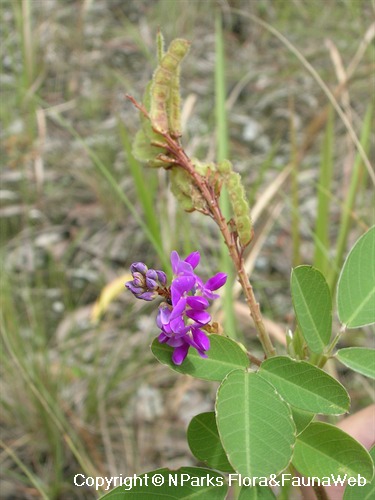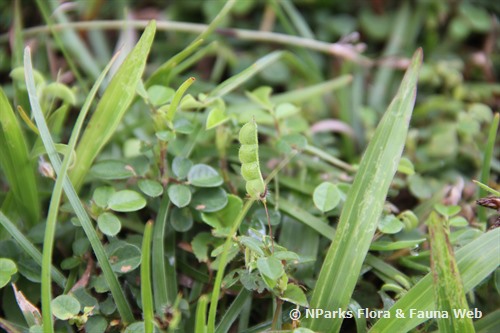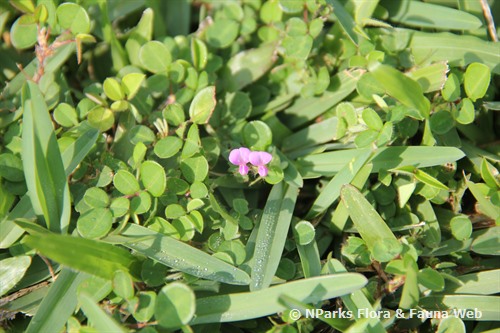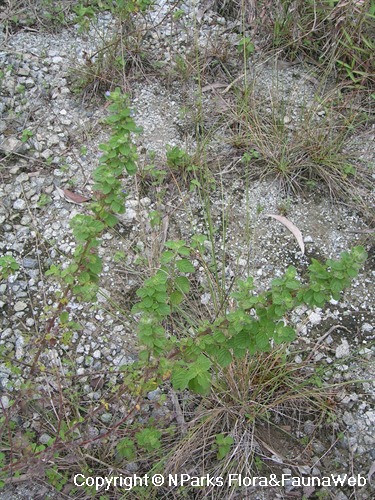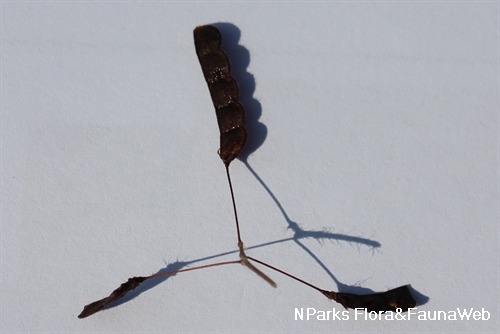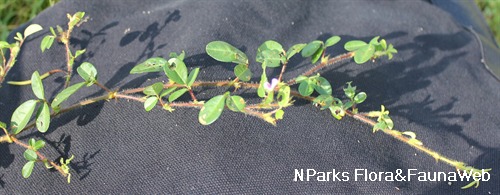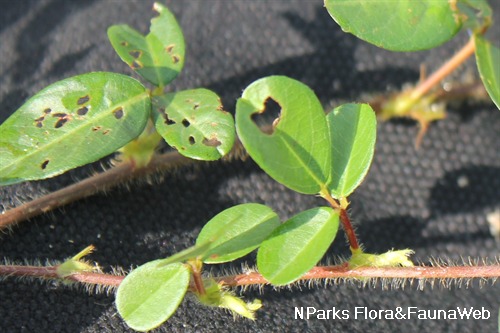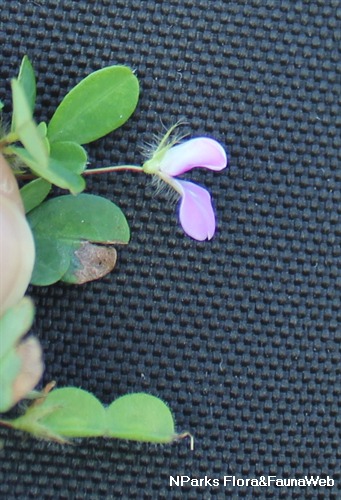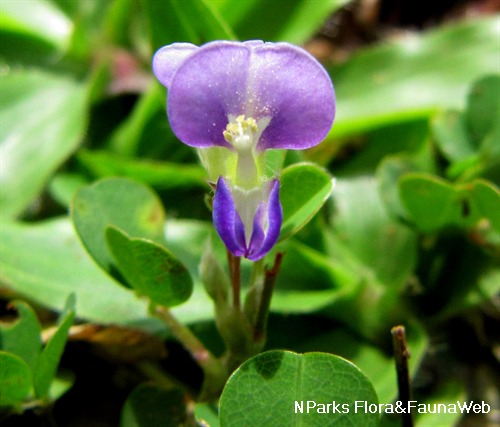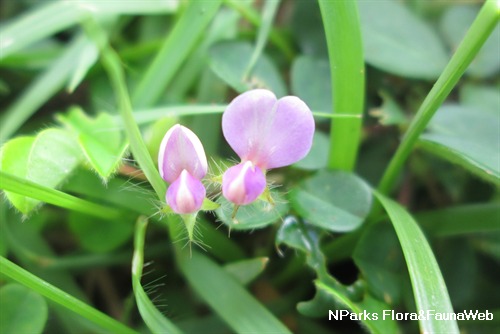
Back
Grona heterophylla (Willd.) H.Ohashi & K.Ohashi
| Family Name: | Fabaceae (Leguminosae) |
| Synonyms: | Desmodium heterophyllum (Willd.) DC. |
| Common Name: | Variable-leaf Tick Trefoil, Spanish Clover, Greater Clover-Leaved Desmodium, Hetero, Rumput Sisek Naga |
Name
Classifications and Characteristics
| Plant Division | Angiosperms (Flowering Seed Plants) |
|---|---|
| Plant Growth Form | Creeper |
| Maximum Height | 15 cm to 20 cm |
Biogeography
| Native Distribution | Pantropical |
|---|---|
| Local Conservation Status | Native to Singapore (Least Concern (LC)) |
Description and Ethnobotany
| Growth Form | Tropical legume with a prostrate and branching growth habit. |
|---|---|
| Foliage | Compound leaves are composed of 3 oval to obovate leaflets. Leaflets have smooth edges (entire margin) with a slight notch at the tip (emarginate). They are densely covered in soft, white hairs. |
| Stems | Young stems are covered in soft brown hairs (1.5-2.0 mm long), while mature stems are woody and hairless. |
| Flowers | Small flowers are pink and pea-like (3-5 mm long). |
| Fruit | Fruits are short pods (1.2-2.5 cm long) with wavy edges. Bean-shaped seeds are dark brown and smooth. |
| Similar | This species is similar to Desmodium triflorum, but it has a hairy calyx while D. triflorum doesn't. |
| Cultivation | This species is shade tolerant. |
| Ethnobotanical Uses | Medicinal: The Chinese use the plant as remedy for dysentery, to treat rheumatism and to relieve fever. The Malays drink a decoction of the roots for stomach ache and used a poultice to treat skin problems. The plant is used by Indonesians and the Filipinos to treat wounds and ulcers. |
Landscaping Features
| Landscape Uses | Groundcover |
|---|
Plant Care and Propagation
| Light Preference | Full Sun |
|---|---|
| Water Preference | Little Water |
Foliar
| Mature Foliage Colour(s) | Green |
|---|---|
| Leaf Area Index (LAI) for Green Plot Ratio | 4.5 (Shrub & Groundcover - Dicot) |
Floral (Angiosperm)
| Flower Colour(s) | Purple |
|---|
Image Repository
Others
| Master ID | 630 |
|---|---|
| Species ID | 1925 |
| Flora Disclaimer | The information in this website has been compiled from reliable sources, such as reference works on medicinal plants. It is not a substitute for medical advice or treatment and NParks does not purport to provide any medical advice. Readers should always consult his/her physician before using or consuming a plant for medicinal purposes. |

